On paper, the role — flying alongside the Romanian Air Force as part of NATO’s enhanced Air Policing mission — is standard. But, with the conflict over the border in Ukraine still ongoing, the significance of the RAF’s job is difficult to overstate.
“When I briefed the entire deployment, I wanted to put into clear focus where we are geographically in the world and underscore how important providing that deterrence for NATO is,” he says.
You've always got to be aware of how close we are to a full-scale conflict. 100 miles is not very far when you're in a Typhoon, it's a matter of minutes.
“As life becomes routine here, it might sometimes be easy to forget where we are, and why we're here. But you've always got to be aware of how close we are to a full-scale conflict. 100 miles is not very far when you're in a Typhoon, it's a matter of minutes.”
Naturally, Sqn Ldr Monaghan and the team receive daily intelligence briefs to ensure they are aware of the latest situation.
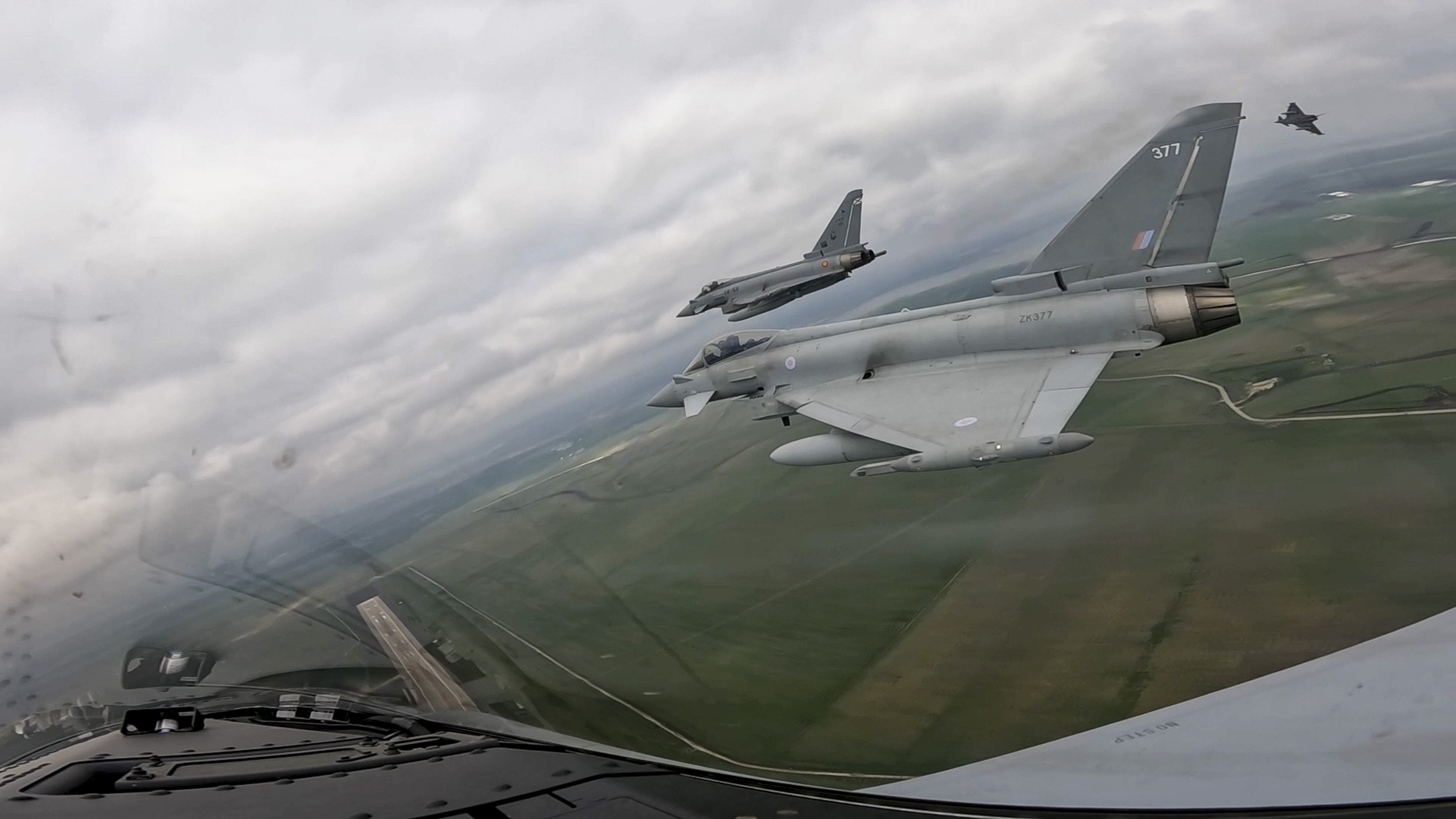
“It’s really important that NATO sets a defensive posture,” he says. “We're very aware that we don't want to escalate the conflict, but at the same time, we need to provide a presence that offers a deterrence. We maintain a de-escalatory mindset but, at the same time, by doing all our daily training activity and exercises with NATO partners, we are providing a deterrence. We are showing we are a credible force, should we be called upon.
“It is a very fine balance.”
AGILE AND READY
For the RAF, the deployment to Romania is not simply about providing air policing, it also represents a first-class opportunity for the squadron to take part in training exercises alongside its NATO partners.
“We get far many more opportunities out here purely thanks to the geography,” says Sqn Ldr Monaghan. As well as working with the Romanian Air Force’s F-16s and alongside a detachment from Finnish Air Force, IX (B) Squadron has been taking part in other exercises and larger-scale missions.
In recent years, there's been a shift within the Royal Air Force for its forces to be more agile.
What sets Typhoon apart is the fact that it was designed to be a QRA platform. It is like a coiled spring, ready to launch in minutes. Then, when you’re in the air the sheer power of the Typhoon allows us to respond swiftly and decisively.
“In the past, we would have come out with a much smaller team and concentrated on the air policing mission. Now we do that, plus a lot more work with our NATO partners. For example, we went to Finland for a week with a small footprint of aircraft and ground crew. We also spent a week in Poland operating alongside US and Polish allies. It’s all part of our wider focus to ensure we can operate as one unit rather than individual air forces.
“The object is to ensure that if NATO or Europe is attacked, we're well drilled and capable of operating together, not as separate units. We aim to make the total greater than the sum of the parts. If we ever have to operate as NATO together, those will be the things that we fall back on. We will be operating off similar tactics and speaking the same language.”
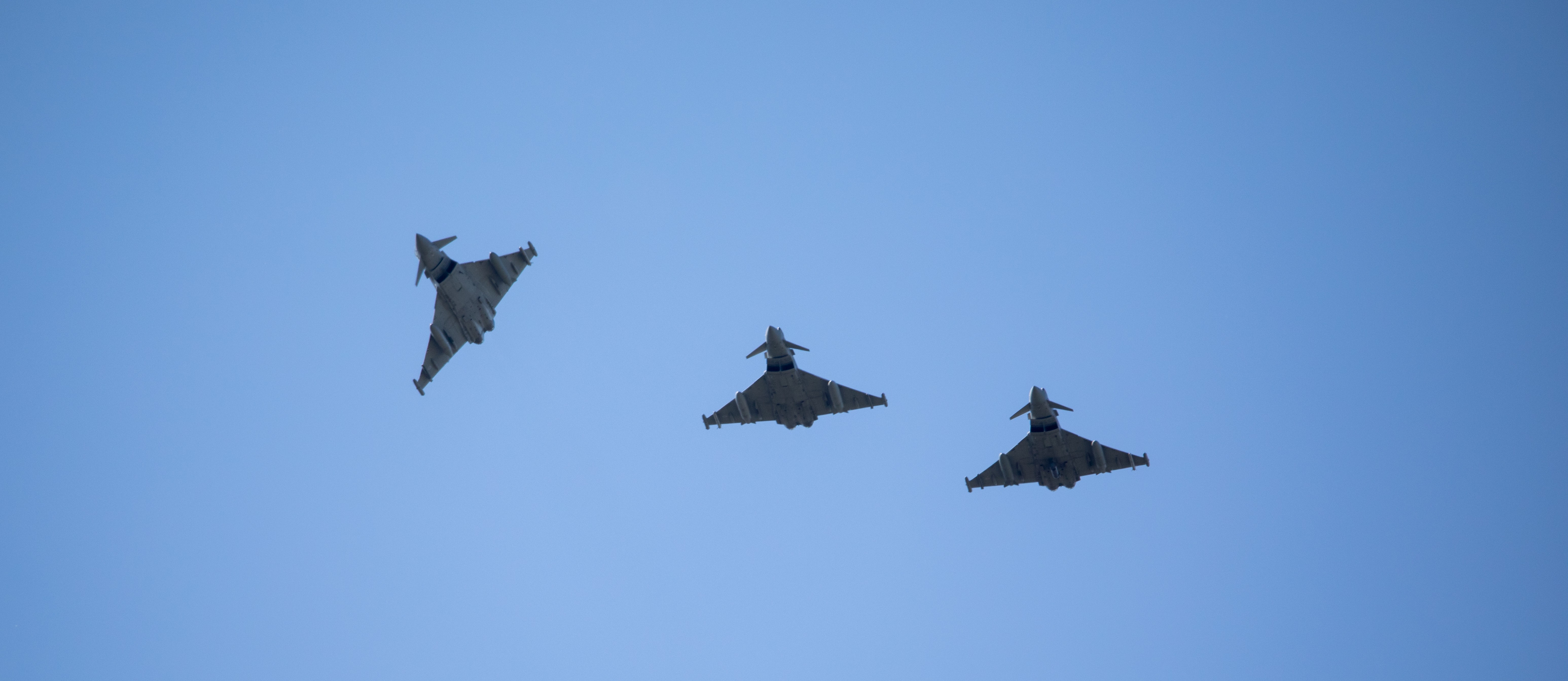
The Typhoon's inherent DNA adds to this sense of readiness. "What sets Typhoon apart is the fact that it was designed to be a QRA platform,” says Sqn Ldr Monaghan. "It is like a coiled spring, ready to launch in minutes. Then, when you’re in the air the sheer power of the Typhoon allows us to respond swiftly and decisively.
“If you need to get somewhere quickly you can. Typhoon can be at 30,000ft in less than a minute. Compared to other jets it has an abundance of pure power.”
Sqn Ldr Monaghan's previous operational experience has prepared him well for this latest assignment. His first deployment was on Op Shader, defending Iraqi airspace and combating ISIS. He has also patrolled the skies over the Falkland Islands and last year carried out NATO air policing over the Baltic Sea from Estonia, working closely with German Air Force Typhoons.
Of course, behind every successful deployment, there is a dedicated team. Says Declan: “The aircrew is just the tip of the iceberg — you're talking ten times as many engineers to maintain the jets, to service them and keep them going so that we can do what we do.
“Then you've got all the other support staff. Intelligence is key — we need the best information to make our decisions as aircrew. Then the jets wouldn't get airborne if we didn't have a flight plan. You need ops assistance to book your airspace so we can do the training activity.”
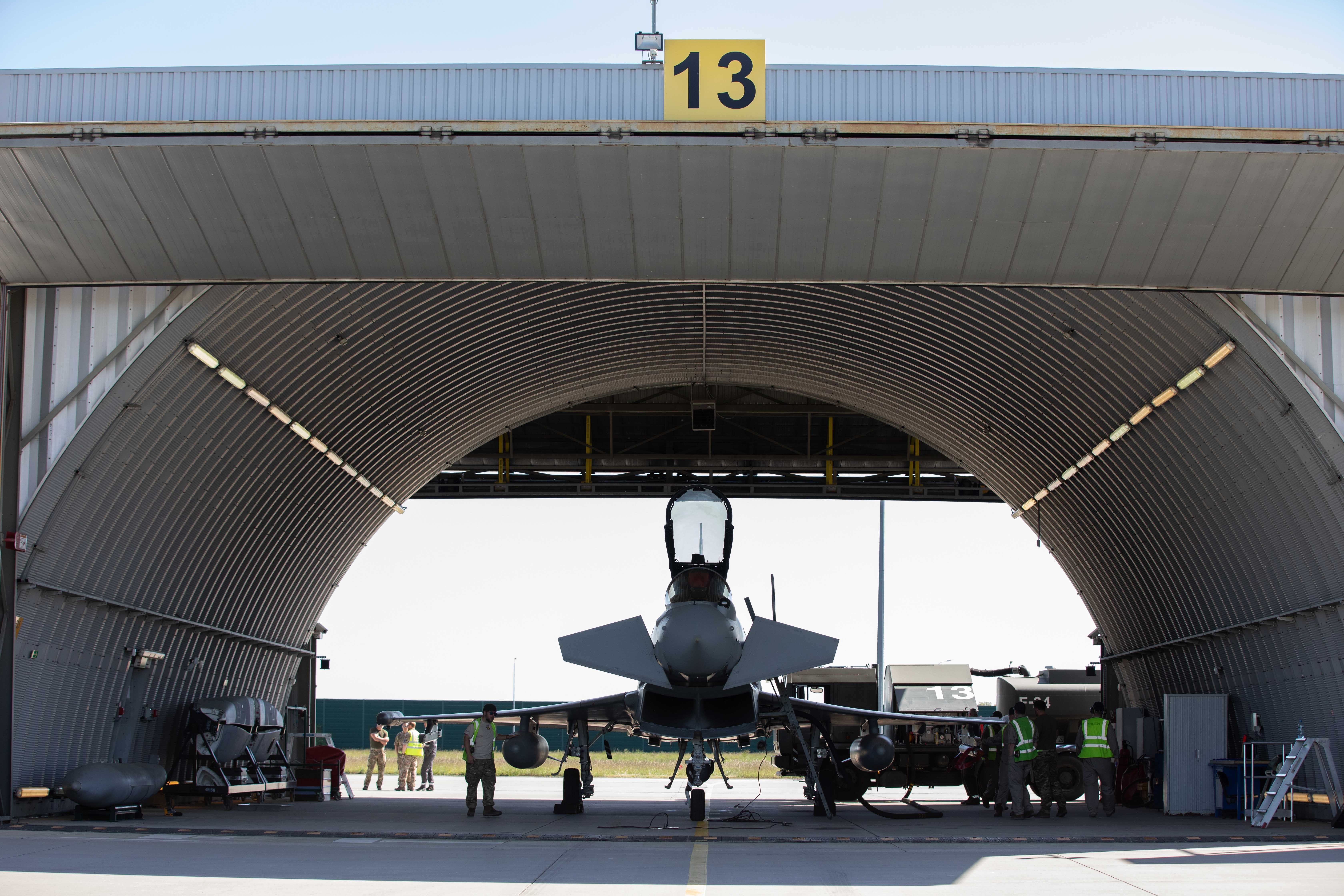
Beyond the squadron, more than 200 personnel from the 140 Expeditionary Air Wing provide a range of vital services: from logistics and admin staff to comms. There’s even a doctor, nurse, physio and personal trainer.
“It's not just about having the aircraft, the kit and the fuel in place. It’s also important to ensure the people who enable and operate it are fit and healthy. Four or five years ago, you wouldn't have seen a physio on a deployment, whereas now it's standard procedure.
“Typhoon operates at such high G forces that you often need that intervention to keep fit. That is not just pilots – everyone gets niggles. We need the support to keep people fit and healthy so that they can operate and keep going.”
BORDER CONTRAST
As the sun sets over the nearby Black Sea resort town of Constanța in Romania, the contrast couldn't be starker for Squadron Leader Bernard Nissenbaum, IX(B) Squadron Senior Engineering Officer. Just 30 minutes away from a vibrant beach scene, his team operates on high alert keeping jets in a state of permanent readiness for action. In Typhoon terms, it is a matter of minutes from the borders of war-torn Ukraine.
The resort is like the Ibiza of the Black Sea – with great restaurants, a really cool vibe and a rich history to explore. Yet, a few miles away, there's a war."
"There's a dichotomy in being here," Sqn Ldr Nissenbaum reflects. "The sun is shining, the weather is beautiful, and we're near this amazing holiday destination. The resort is like the Ibiza of the Black Sea – with great restaurants, a really cool vibe and a rich history to explore. Yet, a few miles away, there's a war."
The reality is clear for Sqn Ldr Nissenbaum, he says: “None of us wants to return to full-scale war in Europe. It would be disastrous not just for the continent, but for the whole world. So, you get a powerful sense of how important our deterrence work is, from a NATO point of view.”
The team from the RAF is working alongside a detachment from the Finnish Air Force — one of their first since Finland joined NATO last year. Says Sqn Ldr Nissenbaum: “This gives you a sense of the reality of the times we live in and the fragility of the peace that we've enjoyed for the last eight decades.”
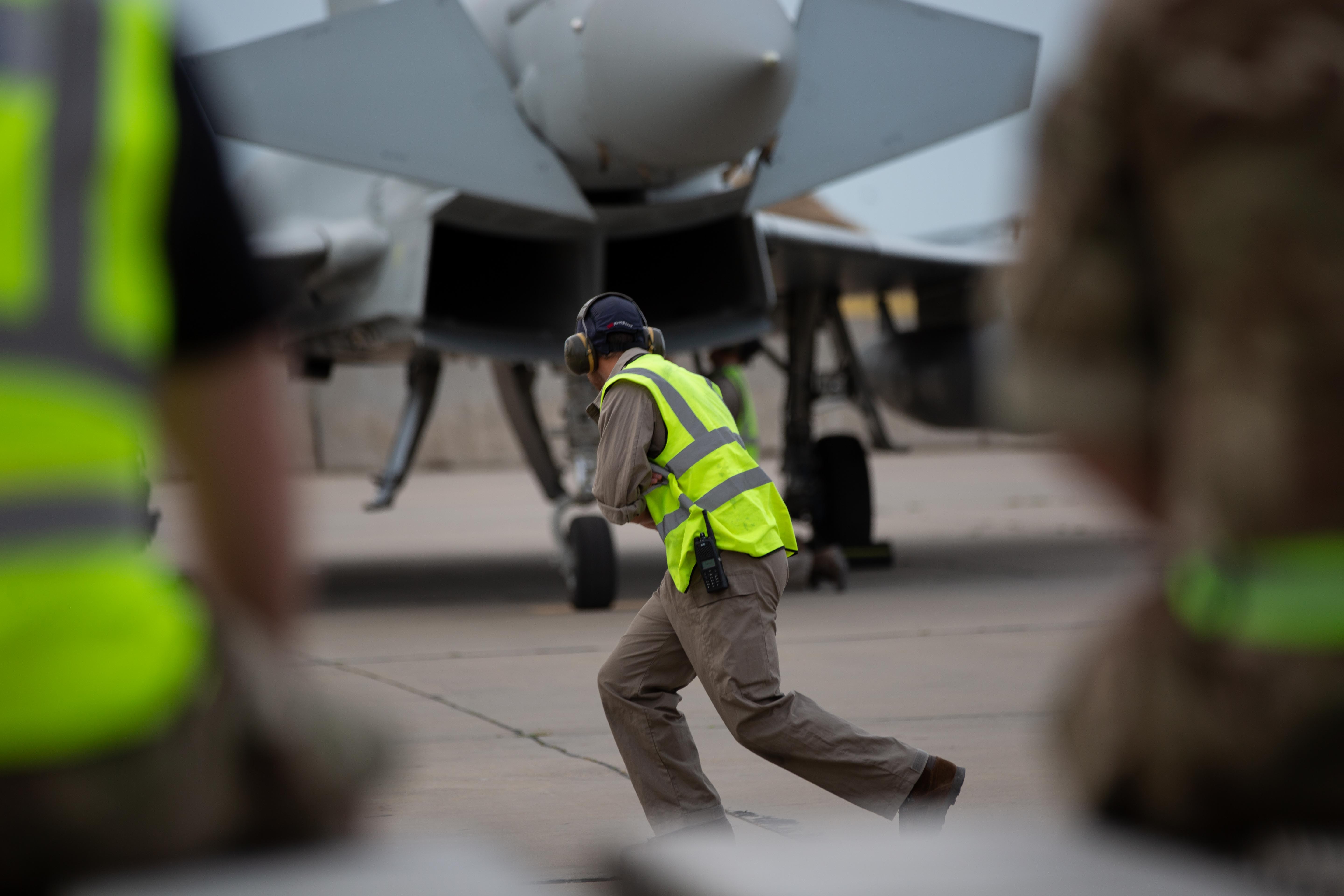
Central to this mission's success is the reliability of the RAF's Typhoon jets. Sqn Ldr Nissenbaum speaks highly of their performance: "We have aircraft that we keep ‘cocked on’— they are always on standby to scramble. They are ready with pilots on alert, and we've demonstrated our ability to NATO officials."
The team passed a recent NATO evaluation with flying colours, impressing with their ability to get airborne quickly at a moment’s notice.
The Typhoons are also meeting the tough demands of air policing and the heavy drumbeat of additional activity, with relatively stress-free maintenance and high operational efficiency.
Despite operating out of semi-permanent aircraft shelters, we are seeing remarkable serviceability and minimal maintenance issues. The reliability has been excellent.
“Despite operating out of semi-permanent aircraft shelters, we are seeing remarkable serviceability and minimal maintenance issues. The reliability has been excellent," Sqn Ldr Nissenbaum says.
The harsh operating surfaces at the airfield, which some feared might have worn down tyres and stressed the airframe, have not proved to be significant problems either. A lot of the credit here is down to the meticulous planning that takes place before a deployment like this.
“The preparation goes on for months. It’s not just about getting the aircraft ready but the people too. For me, the whole game is about people — the quality of people and the preparedness of people.”
This ethos is central to the operation, with each team member — from pilots to engineers, admin staff to logistics personnel — playing a vital role.
“It means quickly adapting to new missions and environments. In the last two months, we've moved aircraft and personnel to Op Shader to bolster our presence in the Mediterranean, responding to immediate threats during the escalation of tension in the Middle East. In addition, we have supported other exercises – a detachment went to Finland as part of Exercise Swift Response and another to Poland as part of Exercise Astral Knight.
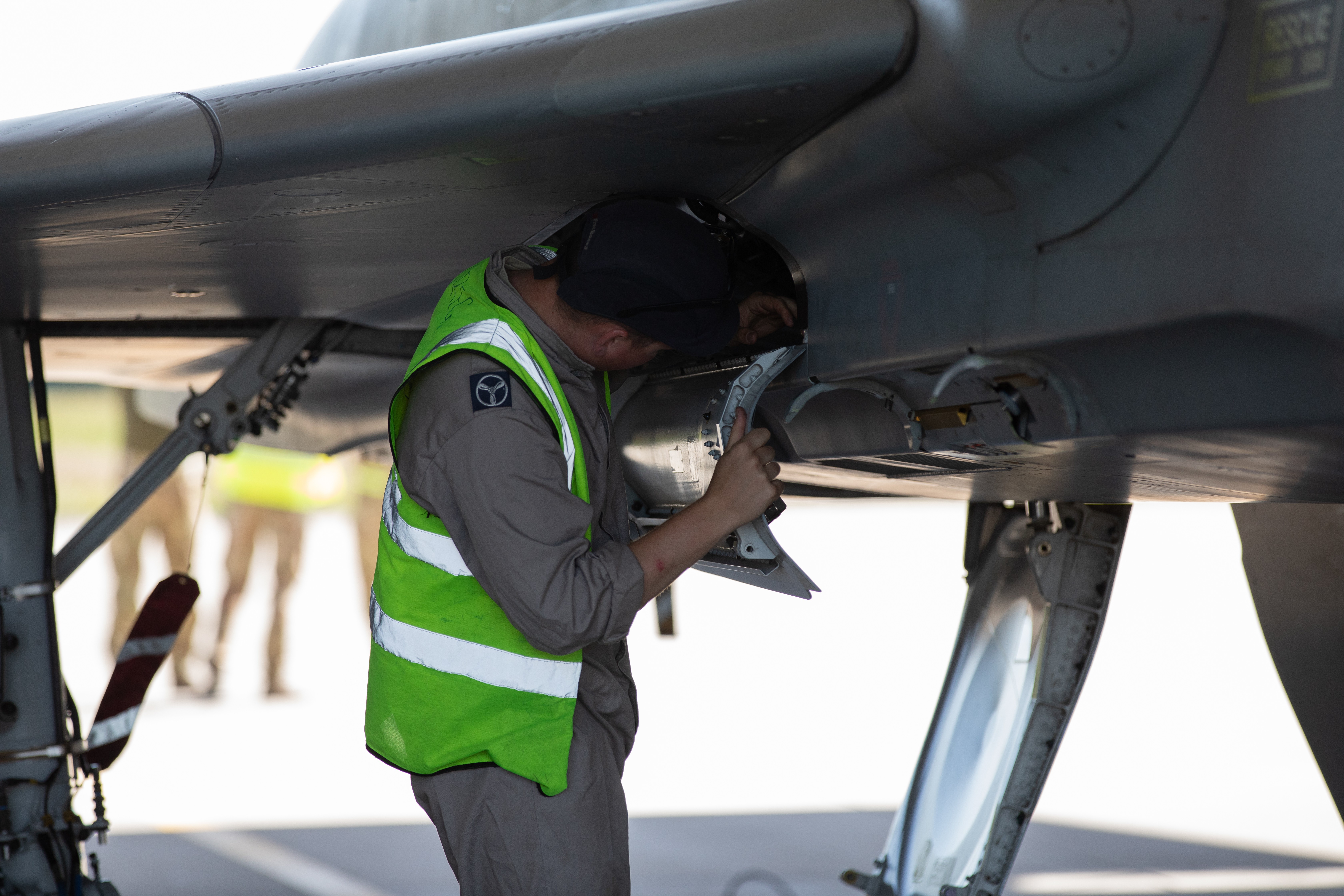
"The Op Shader work was very dynamic, relatively unplanned, and very short notice. We literally got people out of bed at four in the morning, saying, ‘We've got to go,’ and people were able to respond, have their bags partially packed, so were quickly able to get themselves out to the aircraft."
“It was a remarkable effort by the squadron. There was a real sense of, this is what we've come to do. It was amazing.”
Meanwhile, a taxi ride down the coast, the party goes on. Holidaymakers raise a glass and enjoy their freedom. Oblivious to the work of the men and women of the 140 Expeditionary Air Wing and IX (Bomber) Squadron who keep them safe.
